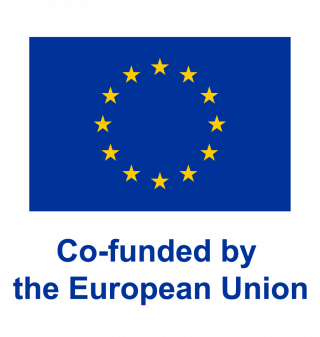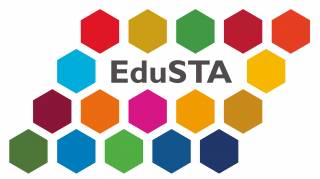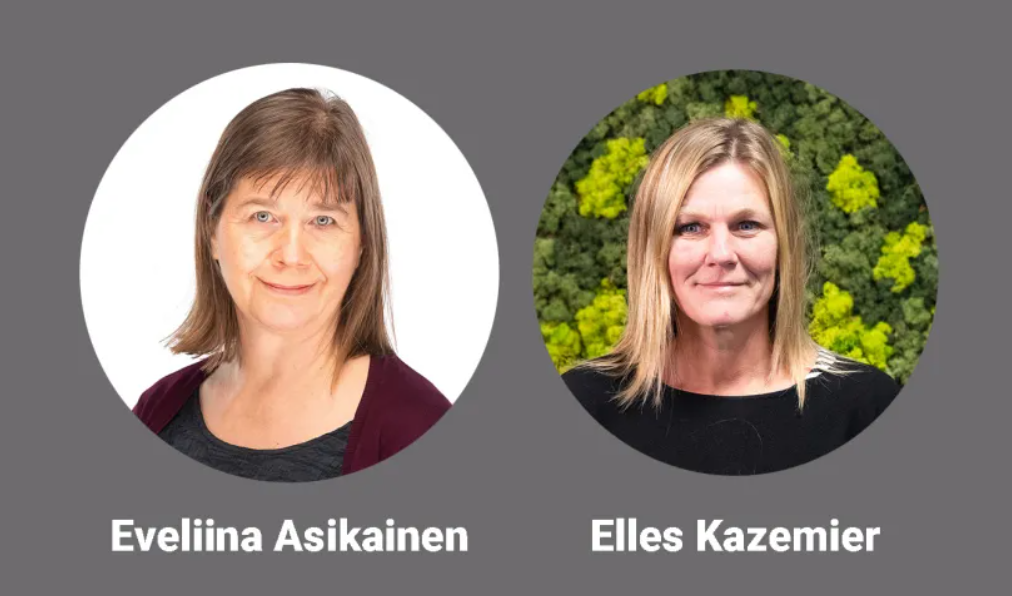The original Dutch article:
Teacher Academies: een bijzonder initiatief voor lerarenopleidingen in het programma Erasmus+
English translation:
“Teacher Academies is an initiative for teacher education universities that is quite special in the programme Erasmus+. Up until now there haven’t been programmes solely for teacher educators. It matches perfectly with our projects name ‘EduSTA’, which is Finnish for being at the front line.”
Eveliina Asikainen, coordinator of the EduSTA project through Tampere University of Applied Sciences in Finland, talks about one of the flagship actions of programme Erasmus+, together with Dutch partner from Hanzehogeschool Groningen Elles Kazemier.
EduSTA stands for Academy for Sustainable Future Educators. The project focuses on strengthening the European Dimension of teacher education via Digital Open Badges as an instrument for performing, acknowledging, documenting and transferring the competencies as micro-credentials.
Elles: “Each badge covers as a teacher competency, relevant for learning for sustainability. Nine competencies together give shape to a meta badge: the Educator for Sustainable Future.”
The nine badges are divided between four competence areas: sustainability literacy, learning ecosystem design, enabling action and reflexive praxis.
For initial and experienced teachers
Eveliina: “We want more teachers to be confident about the competences of teaching on sustainability. On content, but also in ways to facilitate students in becoming competent in for example futures thinking and system thinking.”
The programme focuses on training for primary, secondary and vocational educators.
Eveliina: “This is already a wide pallet of future teachers, but we also include in-service training for teachers that are already there.”
Elles: “That was one of the reasons for Hanzehogeschool to participate in this project, because we think these teachers also need to learn about these skills that do justice to the complexity of green transition challenges. By including this target group, EduSTA offers something for each teacher in different parts of their career.”
Perfect fit with current trends and transitions
In the current climate, there is a rising attention for flexible learning and the green transition.
Elles: “The project matches those transitions perfectly. Also, during this project we discovered that the badges can also service as a sign of expertise. So where we as Dutch partner started out not yet seeing a lot of value in these badges for our context, we now understand how they can be beneficiary.”
Eveliina: “After the project is finished, we will share all the information publicly, so other institutions can benefit from our knowledge and everything we have developed for this project as well.”
Partner or coordinator?
You can join a project for Erasmus+ as a partner or a coordinator. But what’s the difference and how do you choose which role you want to take on?
Elles: “With this project, Tampere UAS with Eveliina as project lead carries much more of the weight. She is in the lead and has the umbrella view. We as partners are responsible for one or two work packages where Eveliina is responsible for the entire project. My tip for every consortium: choose the most experienced institution as coordinator, to also write the application. And find interesting and complementing partners to complete the consortium.”
More tips for future applicants
Eveliina and Elles have more pieces of wisdom to share. According to them, you should:
- Read the call very carefully and try to find elements that could be interesting for your institution.
- Start on time, because it will take months to complete the idea and then you need time to actually write the proposal.
- Follow procedures within your own institution. Inform your Erasmus liaison from day one.
- Be aware of traveling. If you are choosing to be conscious about it, make it visible in your application. It could help you to receive funding. It can also help with building your consortium, because you can expand a bit more than with travel included.
About the Erasmus+ Teacher Academies
Erasmus+ Teacher Academies bring together initial and continuing teacher education institutions. They work together to improve the quality of initial teacher education and support for teachers during the early years of their careers. They will also consider measures to upskill teachers throughout their careers.
Want to know more about the action and the new Call 2024? Navigate to our Dutch website of take a look at the Funding & Tender Opportunities portal.
Text and photo: Dutch National Agency Erasmus+


